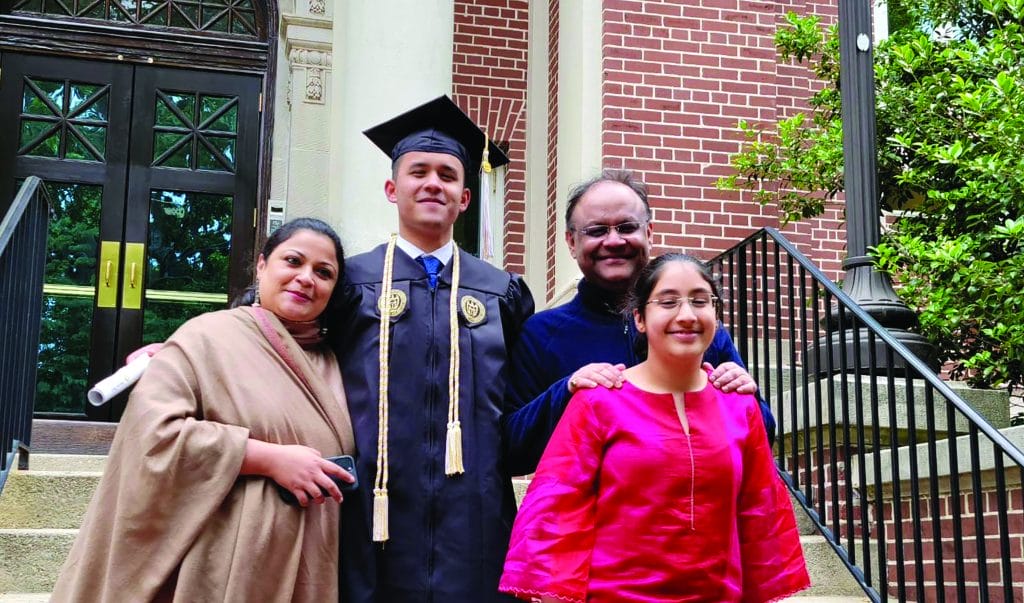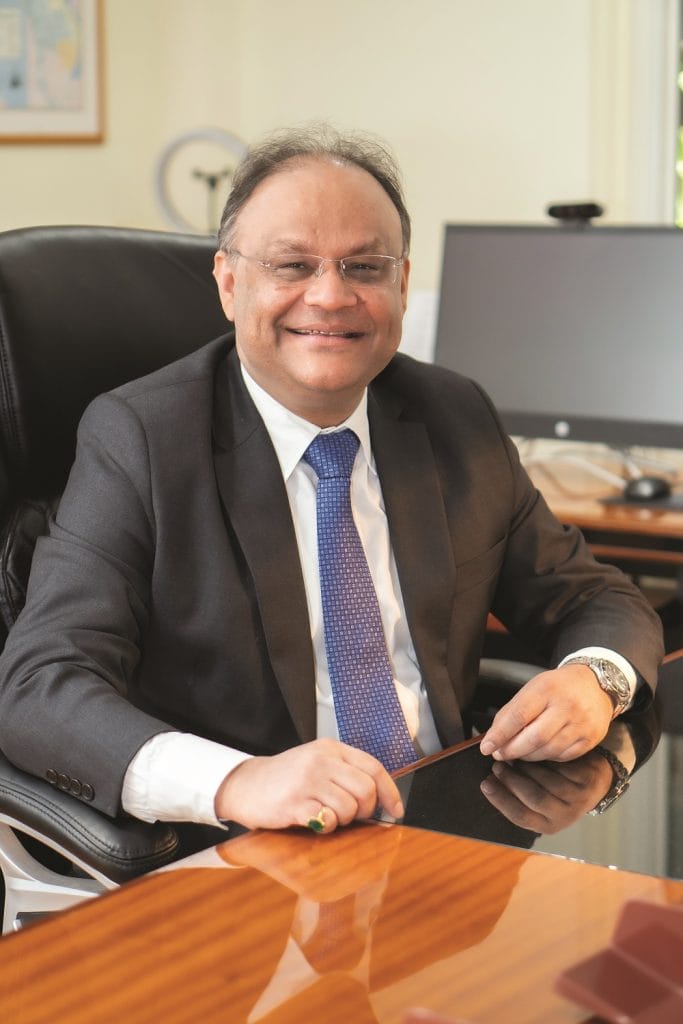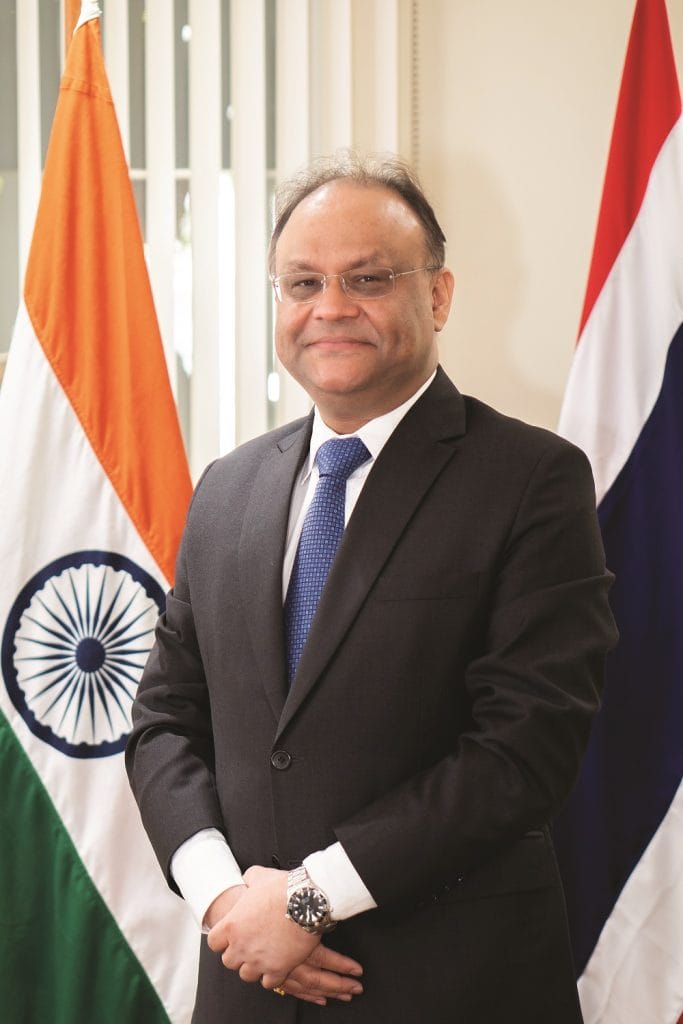Championing India in Thailand
By Shradha Aswani
“When you sit under your flag, and speak on behalf of a billion people; no eight-, 10- or 20-digit salary can replace the high that it gives you,” remarks H.E. Nagesh Singh, India’s newest Ambassador to Thailand, with pride, while I sit in awe of the good fortune I have in speaking to him. Before being appointed as the Head of Mission here in Thailand, Mr. Singh has rich experience serving in several key positions in the Ministry of External Affairs, India, including his latest position as the Chief of Protocol.
He has also served as the Consul General of India in Atlanta, the Joint Secretary/Officer on Special Duty to the Vice President of India, and as Counsellor (UN Administrative & Budgetary Affairs) in the Permanent Mission of India to the United Nations in New York. He holds a Bachelor’s degree with honours in Economics from the University of Delhi and a Master’s in Economics from the Delhi School of Economics.
In this exclusive feature, we unveil the man behind these roles, and talk about the crucial part he will play in propelling Indian-Thai bonds to new heights whilst further enhancing the two countries’ already-robust relationship.
How does it feel to be in Thailand for your first tenure as an ambassador? What do you look forward to the most?
Being appointed as the Ambassador of my country is the biggest honour to begin with, no matter what part of the world it is in. Secondly, to be sent to a country like Thailand which we consider a civilisational neighbour, a Maritime neighbour, and an important pillar of our Act East Policy, makes it an even bigger privilege. So, it is wonderful to be here in Thailand. Personally, and for my family, this has been the easiest integration into a foreign society. The people are warm, our cultures are very similar, and it is just four hours away from home. No complaints at all. Everything is perfect.
Your journey so far has entailed equal postings in India and abroad. Which tenures have you enjoyed more and why?
Both have their own strengths and weaknesses. Serving at the headquarters, back in India, allowed me to be at the centre of our own decision making and gave me global insight. As the Ambassador, you have a good team helping you, but you have to use all your capacities, of persuasion, negotiation, discussion, and conversation, with every segment of Thai society. Not just the government, but with the civil society, with universities, think tanks, and the corporate sector; so that we are able to build a relationship that covers all aspects
of bilateral relations.
How would you summarise the relationship that we hold with Thailand currently?
The cultural bond between India and Thailand runs deep. We are civilisational neighbours, be it through Buddhism or aspects of Hinduism here that route back to India, or the language that is built on the foundation of Pali and Sanskrit.There is at least a thousand-year long exchange between the two countries. At the same time, we also share a maritime boundary in the Bay of Bengal. Our relationship, whether in economic terms, commercial terms, security terms, in the form of defence and other security issues, or in terms of people-to-people contact, is extremely multifaceted.
ASEAN is the central pillar of India’s Act East Policy. As the second largest economy and as an important political player in ASEAN, Thailand forms a very important pole in this policy. India and Thailand also cooperate on other multilateral forums like the Bay of Bengal Initiative for MultiSectoral Technical and Economic Cooperation (BIMSTEC), the Ayeyawady-Chao Phraya-Mekong Economic Cooperation Strategy (ACMECS), the Mekong Ganga Cooperation (MGC), the Indian Ocean Rim Association (IORA) and more. The width and depth of this relationship is very, very substantive.
The Act East Policy has been in action for almost eight years now. How would you describe its progress and the impact it has had in our association with the kingdom?
I think trade is the biggest example of how we are faring. I was looking through the Bangkok Post recently, and the bilateral trade between the two countries in the last year has amounted to USD 17. 7 billion, a rise of 18 percent from 2021, despite the global slowdown due to the pandemic. In terms of people-to-people contact, last year there were almost a million Indian tourists in the country, second only to Malaysia. In 2019,
there were 2 million Indians who visited the country as tourists. Our leadership meets each other regularly. The Prime Minister of Thailand participated in the Voice of the South Summit that our Prime Minister hosted. Investments are rising both ways. On the defence side, we are doing joint exercises, training, staff level meeting, etc. Student exchanges have been happening. There is a whole of bouquet of aspects of bilateral relations that can be discussed.
The ‘Make in India’ initiative has been at the centre of India’s economic initiatives. Has it helped gain investments from Thailand?
Any bilateral relationship has to be mutually beneficial. We can’t expect to gain everything, without giving something as well, and the same is true for trade and investment. In today’s age, businesses go where they make profit. What is attractive about India is that we are a country of 1.4 billion people. We are a USD 3.5 trillion economy that is the fastest-growing large economy in the world, and there are studies that predict
that we will be the world’s third largest economy and a USD 5 trillion consumer market by 2030. India’s large consumer size, and the dynamism of its economy, are huge attractions for Thai companies and for others around the world. Similarly, a lot of Indian companies are setting up shop here in Thailand, looking at ASEAN as a market and for intra-ASEAN trade facilitation
The biggest exchange between India and Thailand lies in the tourism industry. While there are a lot of Indian tourists visiting the kingdom, not many Thai travellers visit the Subcontinent. What do you attribute this disparity to, and are there any plans to improve these numbers?
In the three months that I have spent here, I have realised that there are improvements that could be made in informing the Thai people about the possibilities in India. We haven’t been able to communicate that we have much more to offer than Buddhist tourism, or pilgrimage tourism. A country of our size has everything, from the mountains at the top, to the ocean in the South, the desert in the West, and the wettest place on the planet in the Northeast. Whether it is adventure tourism, wildlife tourism, or historical tourism, there is much more to India than just Kushinagar or Bodh Gaya.
In fact, there are some concerns I hear about the tourist infrastructure in India. The other day we were asked somewhere whether we have toilets in India. I don’t know how to answer that question, because the hospitality industry in India is very strong. We have some of the best hotels in India, there are uber-luxury trains, like the Buddhist-circuit trains, the Ramayana-circuit trains, running in so many parts of the country.
Somehow, the awareness is lacking.
What we plan to do is to start engaging very intensively with tourism related stakeholders and tell them about the variety India offers. Times have changed, and we can’t rely on brochures or pamphlets to sell the country. We need to have a holistic promotion plan that erases these stereotypes. Every country has problems, but it is our job to invite people there, make them comfortable, and tell them that visiting
‘Incredible India’ is a wholesome experience.
What are the other policy-level changes that you envision bringing about in your term here? Are there any specific areas you wish to focus on?
The policies are made by the headquarters in Delhi. We just implement those policies. The focus for me is on people-to-people contact, which is tourism. Not just to advance a better understanding of the country amongst Thai people; but also, historically, it has been seen that where tourists go, businesses follow. And
diplomacy is about business.
Secondly, the science, technology, and academic exchanges are extremely significant as well. There five universities here with India study centres, eight or nine other universities where we have India corners. There are young Thai students studying Sanskrit, or Hindi, with great interest in Indian studies. Fostering that at an institutional level, to build a relationship between universities in Thailand and universities in India, can help
us build a link with the new generation.
The third area of priority is further strengthening the defence and security cooperation, considering we share the Bay of Bengal. Another one is the digital ecosystem. We are the third largest start-up ecosystem in the world, with about a hundred-odd unicorns. We would like to scale them up or perhaps partner with Thai interlocutors to see how we can grow in those areas. I could just go on ad nauseam, since there are many aspects that we are trying to build on.
Last but not the least, what is the message that you would like to give to the Indian community members and leaders in Thailand?
Be it Thai citizens of Indian origin, or non-resident Indians, what I would like to tell them is that they are the biggest asset we have, in this relationship between India and Thailand. They are the living bridge between these two countries, and are well- integrated into this society. Each one of us needs to become an ambassador of the positive message that India emanates, be it through science, technology, or culture. I am just a government functionary, but they have to be the torch bearers of all that we are trying to do, so that we don’t just make India and Thailand better places for our citizens, but also make the region and beyond a better place to live in.










